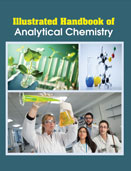Handbooks

Analytical chemistry is the science of obtaining, processing, and communicating information about the composition and structure of matter. In other words, it is the art and science of determining what matter is and how much of it exists. This illustrate handbook delivers a practice-oriented, general guiding theory valid for all methods and techniques. Consideration is given to the detection and determination of metal ions, anions, and various organic and other substances.
Analytical chemistry is the science of obtaining, processing, and communicating information about the composition and structure of matter. In other words, it is the art and science of determining what matter is and how much of it exists. It studies and uses instruments and methods used to separate, identify, and quantify matter. In practice separation, identification or quantification may constitute the entire analysis or be combined with another method.
Illustrated Handbook of Analytical Chemistry provides a uniquely comprehensive and integrated coverage of analytical chemistry, covering basic concepts, classical methods, instrumental techniques and applications. The importance of Analytical chemistry is the determination of the chemical composition of matter. It is the main goal of analytical chemistry. However, the identification of a substance, the elucidation of its structure and quantitative analysis of its composition are the aspects covered by modern analytical chemistry. Analytical chemistry is also focused on improvements in experimental design, chemometrics, and the creation of new measurement tools. Analytical chemistry has broad applications to forensics, medicine, science and engineering. It is a largely undisputed fact that analytical chemistry is of the most fundamental importance not only to all branches of chemistry but also to all the biological sciences, to engineering, and, more recently, medicine, public health, the environment and the supply of energy in all forms. Scientists and technologists need not only to establish the identity of materials but also to quantify their composition and purity and to measure contamination at even tens of nanograms per gram. Even the most abstruse academic researcher needs to be able to analyze his starting materials or products and frequently to measure minute changes in chemical composition in order to be able to draw his conclusions. Analytical chemists typically operate at the extreme edges of analysis, extending and improving the ability of all chemists to make meaningful measurements on smaller samples, on more complex samples, on shorter time scales, and on species present at lower concentrations. Throughout its history, analytical chemistry has provided many of the tools and methods necessary for research in the other traditional areas of chemistry, as well as fostering multidisciplinary research in, to name a few, medicinal chemistry, clinical chemistry, toxicology, forensic chemistry, materials science, geochemistry, and environmental chemistry.
Illustrated Handbook of Analytical Chemistry provides an up-to-date introduction to the subject. This Handbook is intended to students and researchers involved in the field of research laboratories of drug, pesticide and other chemical industries.